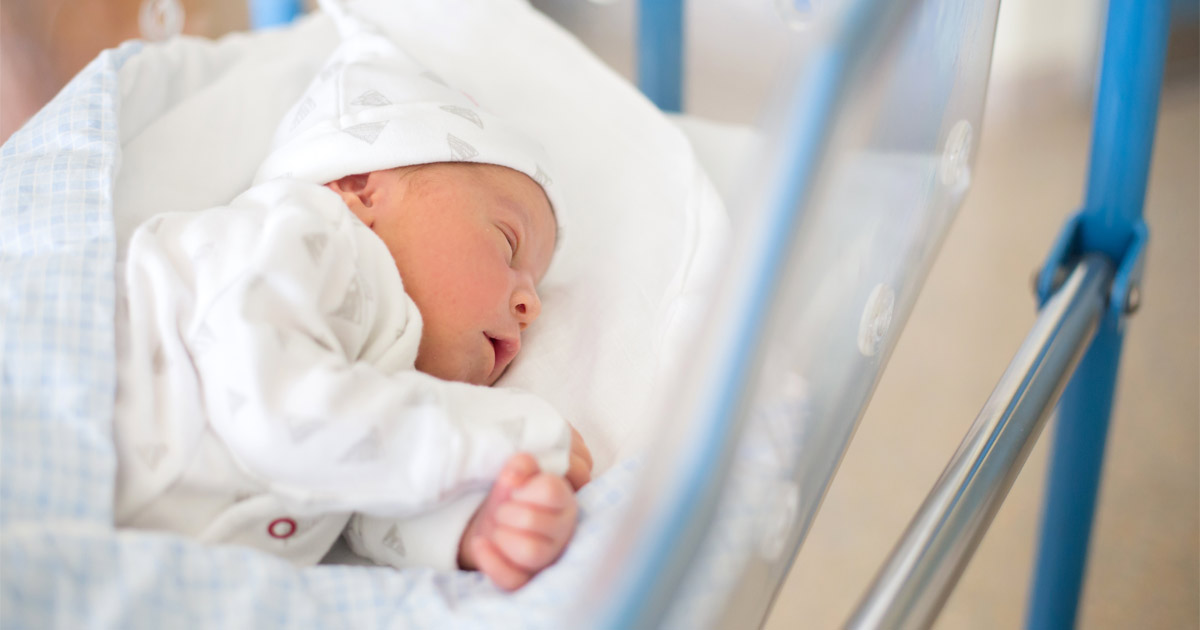What Are the Most Common Causes of Birth Injuries?
September 16, 2022
Welcoming a baby into the world should be a joyous event for the parents. However, complications can arise during the childbirth process that can jeopardize the health of the baby and the mother. Although some of these complications are unavoidable, others are caused by mistakes made by the health care provider who is responsible for monitoring the health of the mother and the baby. If your baby suffered a serious birth injury, and you believe that your health care provider was negligent in some way, you are urged to contact a skilled lawyer experienced in medical malpractice at your earliest convenience.
What Is a Birth Injury?
It is a common misconception that birth injuries and birth defects are the same thing. However, birth defects generally occur during pregnancy and are the result of a genetic condition or some other type of abnormality. Examples of common birth defects include cleft lip, heart defects, spina bifida, and Down syndrome. Even with the best possible prenatal care, most birth defects cannot be prevented or avoided, although factors such as drug use, family medical history, and untreated infections can increase the risk of birth defects. A birth injury, also known as birth trauma, is an injury that the baby suffers before, during, or immediately following childbirth. The main difference between the two is that birth injuries are often the result of medical negligence.
What Causes a Birth Injury?
In some cases, a baby may suffer a birth injury if there are problems during the labor and delivery process. Some of the more common injuries associated with these types of complications include bruising and swelling in the baby, and first-degree tearing in the mother, both of which usually resolve on their own or with minor medical intervention. The following are examples of complications that can cause the baby to suffer a birth injury:
- The baby is large.
- The baby is not in a position to be delivered head-first.
- A normal vaginal birth is difficult because of the size or shape of the mother’s pelvis or birth canal.
- The mother is overweight.
- The labor is extremely slow to progress, or the contractions are not strong enough to move the baby through the birth canal.
- The baby is born prematurely.
- The health care provider uses devices, such as a vacuum or forceps, to deliver the baby.
Other birth injuries are the result of medical negligence. These preventable injuries often cause serious health complications and require ongoing medical care. The following are examples of common causes of birth injuries that are considered negligent:
- Failure to properly screen the mother and baby for common risk factors during pregnancy
- Failure to schedule or convert to a cesarean section when symptoms or risk factors warranted it
- Failure to properly monitor the mother and baby during delivery
- Improper use of forceps or vacuum extractor during a difficult birth
- Failure to prescribe prescription medication, such as Pitocin, to induce labor
- Prescription errors when administering an epidural or other medication
- Surgical errors during a cesarean section
- Failure to properly manage infections caused by vaginal tearing, and episiotomy and a cesarean section delivery
- Resorting to medical treatment that was not indicated for the baby of the mother during childbirth
What Are the Symptoms of a Birth Injury?
Unfortunately, there are a number of things that can go wrong during the childbirth process, and if the team of physicians, nurses, and anesthesiologists make mistakes or fail to provide the standard of care, there is an increased risk of injuries. The following are common symptoms that the mother may suffer if she has a birth injury:
- Heavy bleeding
- Fever
- Severe headache
- Pain, including when urinating or during sexual intercourse
- Incontinence
- Numbness or pins-and-needles sensation
- Feeling of weight in the vaginal or perineal area
Although some birth injuries are obvious, others can be more difficult to identify, particularly if the injury is causing the baby to cry or have interrupted sleeping or eating patterns, which is typical behavior in a healthy baby. The following are examples of early symptoms that a baby may have if he or she has a birth injury:
- Low Apgar score
- Bruises, scratches, or lacerations
- Swelling, often on the head
- Difficulty feeding or swallowing
- Excessive drooling
- Seizures
- Low heart rate or oxygen levels
- Lethargy
- Bluish coloring around the lips or nail bed
- Arched back when crying
- Muscle limpness or stiffness
- Abnormal vital signs, blood work, or imaging studies
Some birth injuries may not appear until the child is several months or years old. These injuries may be associated with the following symptoms:
- Speech delay
- Poor coordination
- Other developmental delays
- Difficulty sitting, standing, crawling, or walking
- Intellectual or other cognitive delays
- Involuntary pulling of the neck
- Ataxia, a lack of bodily movement
- Spasticity, which is the lack of muscle control
- Vision or hearing difficulties
What Are Examples of the Most Common Birth Injuries?
The following are the most common birth injuries that are caused by medical malpractice:
- Cerebral palsy: Oftentimes, cerebral palsy is caused by brain damage that occurs during childbirth. If the health care provider failed to properly monitor the mother or failed to detect fetal distress during labor, the injury could have been prevented. There is no cure for cerebral palsy, and children often suffer additional health issues such as speech problems, vision and hearing impairments, and learning disabilities.
- Brachial palsy: This is an injury that occurs when the brachial plexus, or the group of nerves that go from the upper spine to the neck, shoulder, arm, and hand, are injured. If the injury is relatively minor and caused only bruising or swelling around the nerves, movement should return. However, if the injury involves tearing, the damage may be permanent.
- Caput succedaneum: This is the swelling of the soft tissues of the baby’s scalp. There is an increased risk of caput succedaneum in babies delivered via vacuum extraction, particularly if there were complications or the physician failed to use the vacuum properly. In most cases, this is not a life-threatening injury, and it generally heals on its own.
- Fractured collarbones: This is one of the most common fractures that occurs during labor and delivery. It usually occurs when there are complications delivering the baby’s shoulder during a breech delivery.
- Perinatal asphyxia: This can occur when the baby does not receive enough oxygen. In some cases, this is due to an oxygen deficiency in the blood. However, it can also occur when there is insufficient blood flow to the baby before it is born or immediately following delivery. Symptoms of perinatal asphyxia include seizures, shock, and coma.
- Cephalohematoma: This occurs when there is bleeding under the cranial bone. In some cases, a raised bump may appear shortly after birth. This injury tends to clear up on its own within a few months. However, it may increase the risk of meningitis, jaundice, anemia, or hypotension.
- Spinal cord injuries: These are some of the most serious birth injuries, yet they are largely preventable, as they are often caused by the overly forceful use of forceps that cause nerve damage. If the nerve damage is severe, it can result in paralysis and neurological problems.
What Damages May I Receive in a Birth Injury Lawsuit?
If your child suffered a birth injury and you believe that negligence was a factor, you may be entitled to financial compensation by filing a medical malpractice lawsuit. To have a successful lawsuit, you will need to be able to prove that the health care provider breached the standard of care in some way, which means that he or she acted negligently, made a medical error. or otherwise deviated from the accepted standard of medical care. If you can prove that negligence was the cause of the birth injury, you may be entitled to the following damages:
- All medical expenses associated with the birth injury, including surgeries, follow-up doctor’s appointments, prescription medications, and in-home care. Birth injuries such as cerebral palsy can cost families millions of dollars in medical expenses, and a successful lawsuit will ensure that you are not responsible for any of these costs.
- Lost wages if your child’s birth injury causes you to miss a significant amount of work or prevents you from being able to return to work at all because your child’s injury requires you to be home with your child full time.
- Pain and suffering associated with your child’s injury
- Punitive damages if the health care provider made a particularly egregious mistake that caused the birth injury.
In Maryland, there is no cap on economic damages. The cap for non-economic damages, including pain and suffering, is $860,000 for 2022. A skilled medical malpractice lawyer will secure full and fair compensation.
Baltimore Medical Malpractice Lawyers at LeViness, Tolzman & Hamilton Represent Families Affected by Birth Injuries
If your child suffered a birth injury as a result of medical negligence, do not hesitate to contact the Baltimore medical malpractice lawyers at LeViness, Tolzman & Hamilton. We will assist you with every step of the claims process, ensure that your legal rights are protected, and obtain the financial compensation to which you are entitled. Call us today at 800-547-4LAW (4529) or contact us online to schedule a free consultation.
We have offices in Baltimore, Glen Burnie, and Prince George’s County, allowing us to represent clients in Maryland, including those in Anne Arundel County, Carroll County, Harford County, Howard County, Montgomery County, Prince George’s County, Queen Anne’s County, Maryland’s Western Counties, Southern Maryland and the Eastern Shore, as well as the communities of Catonsville, Essex, Halethorpe, Middle River, Rosedale, Gwynn Oak, Brooklandville, Dundalk, Pikesville, Parkville, Nottingham, Windsor Mill, Lutherville, Timonium, Sparrows Point, Ridgewood, and Elkridge.






